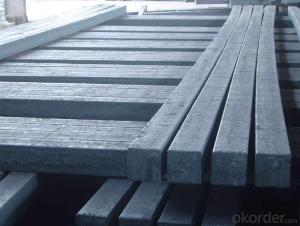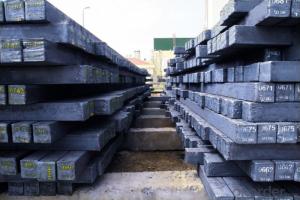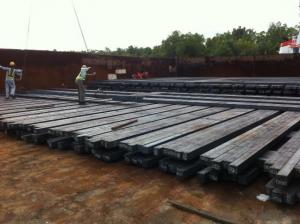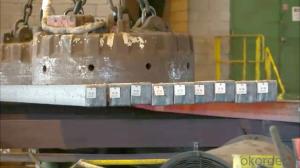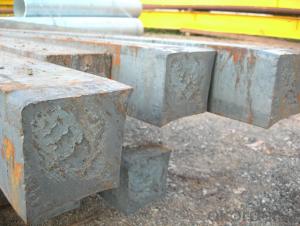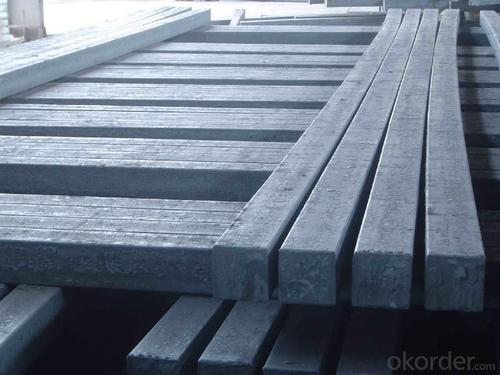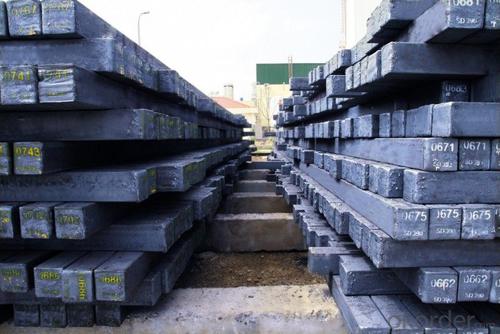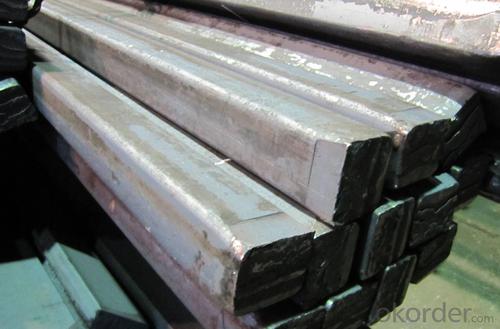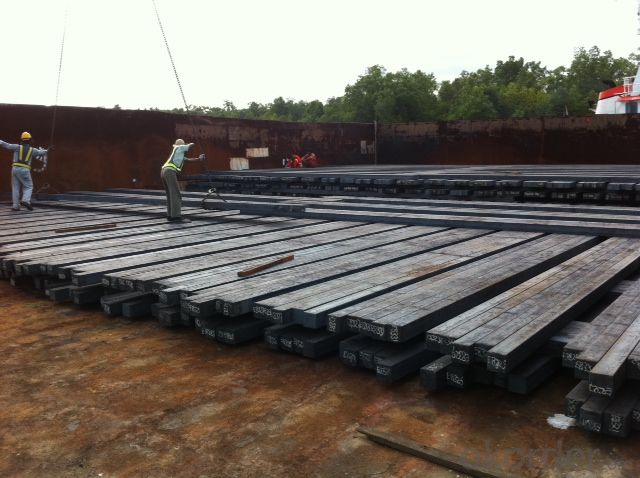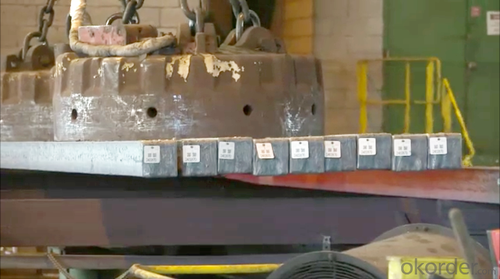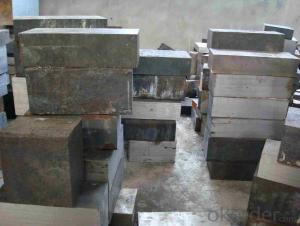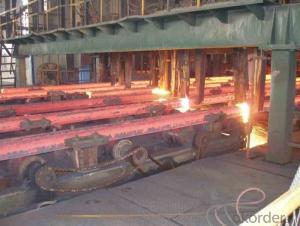Z40 BMP Rolled Steel Coil Construction Roofing Construction
- Loading Port:
- Tianjin
- Payment Terms:
- TT OR LC
- Min Order Qty:
- 100 m.t.
- Supply Capability:
- 10000 m.t./month
OKorder Service Pledge
OKorder Financial Service
You Might Also Like
Structure of Z40 BMP Rolled Steel Coil Construction Roofing Construction 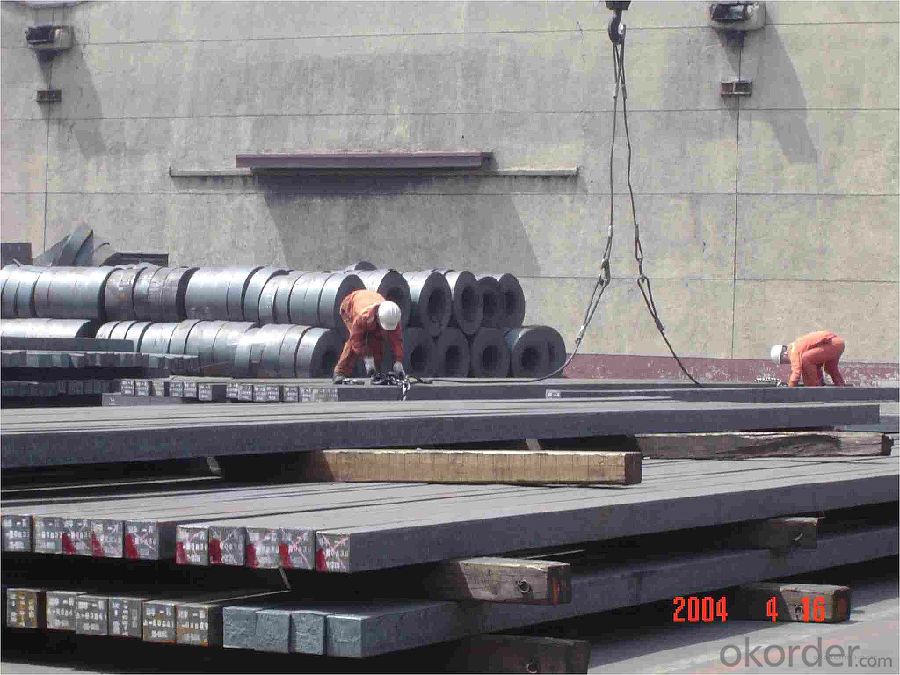
Description of Z40 BMP Rolled Steel Coil Construction Roofing Construction
PPGI is made by cold rolled steel sheet and galvanized steel sheets as baseplate, through the surface pretreatment (degreasing, cleaning, chemical conversion processing), coated by the method of continuous coatings (roller coating method),
and after roasting and cooling. Zinc coating: Z60, Z80, Z100, Z120, Z180, Z275, G30, G60, G90
Alu-zinc coating: AZ60, AZ80, AZ100, AZ120, AZ180, G30, G60, G90

Main Feature of Z40 BMP Rolled Steel Coil Construction Roofing Construction
1) Excellent corrosion resistance: The zinc layer provides a good protection of Pre-painted Galvanizeed Steel Sheet.
2) High heat resistance: The reflective surface of the material aids in efficiently reflecting the sunlight away and in turn reducing the amount of heat transmitted. The thermal reflectivity converts into energy savings.
3) Aesthetics: Pre-Painted Galvanized steel sheet is available in plethora of patterns and multiple sizes as per the requirements that given by our customers.
4) Versatility: can be used in the various areas.Standard seaworthy export packing: 3 layers of packing, inside is kraft paper, water plastic film is in the middle and outside GI steel sheet to be covered by steel strips with lock, with inner coil sleeve.
Applications of Z40 BMP Rolled Steel Coil Construction Roofing Construction
1. Construction and building: roofing; ventilating duct; handrail; partition panel;etc.
2. Electric appliance: refrigerator; washing machine; refrigerator; DVD;etc.
3.Transportation: oil tank; road sign; etc.
4.Agriculture:barn; etc.
5.Others:vending machine; game machine; etc.  Specifications of Z40 BMP Rolled Steel Coil Construction Roofing Construction
Specifications of Z40 BMP Rolled Steel Coil Construction Roofing Construction
| Classified symbol | Yield Point Minimum N/mm2 | Tensile Strength Minimum | Elongation Minimum % | Application | ||||
| N/mm2 | Nominal Thickness mm (t) | |||||||
| JIS | Yogic | 0.25-0.4 | 0.4-0.6 | 0.6-1.0 | 1.0-1.6 | |||
| G3312 | specification | |||||||
| CGCC | CGCC | -205 | -270 | -20 | -21 | -24 | -24 | Commercial |
| CGCD | CGCD | --- | 270 | --- | 27 | 31 | 32 | Drawing |
| --- | CG340 | 245 | 340 | 20 | 20 | 20 | 20 | Structural |
| CGC400 | CG400 | 295 | 400 | 16 | 17 | 18 | 18 | Structural |
| CGC440 | CG440 | 335 | 440 | 14 | 15 | 16 | 18 | Structural |
| CGC490 | CG490 | 365 | 490 | 12 | 13 | 14 | 16 | Structural |
| CGC570 | CG570 | 560 | 570 | --- | --- | --- | --- | Structural |
| ASTM Designation | Yield Point Minimum | Tensile Strength Minimum | Elongation Minimum % | Application | Q/BQB 445-2004(China standard) | ASM A653/A653M | JISG 3312 | |
| ksi(MPa) | ksi(MPa) | TDC51D+Z | (CS TYPE A+Z) | CGCC | ||||
| A653(M)-99 CS TYPE A,B,C | --- | --- | --- | Commercial | TDC52D+Z | CGCD | ||
| A653(M)-99 FS | --- | --- | --- | Lock Forming | TS250GD+Z | (G250+Z) | - | |
| A653(M)-99 DS | --- | --- | --- | Drawing | TS300GS+Z | (G300+Z) | CGC 400 | |
| A653(M)-99 SS Grade33(230) | 33(230) | 45(310) | 20 | Structural | TS350GD+Z | (G350+Z) | CGC490 | |
| A653(M)-99 SS Grade37(255) | 37(255) | 52(360) | 18 | Structural | TS550GD+Z | (G550+Z) | CGC570 | |
| A653(M)-99 SS Grade40(275) | 40(275) | 55(380) | 16 | Structural | ||||
| A653(M)-99 SS Grade50(345) | 50(345) | 65(450) | 12 | Structural | ||||
| A653(M)-99 SS Grade80(550) | 80(550) | 82(570) | --- | Structural | ||||
FAQ of Z40 BMP Rolled Steel Coil Construction Roofing Construction
We have organized several common questions for our clients,may help you sincerely:
1. How Can I Visit There?
Our company is located in Tianjin City, China, near Beijing. You can fly to Tianjin Airport Directly. All our clients, from home or aboard, are warmly welcome to visit us!
2. How Can I Get Some Sample?
We are honored to offer you sample.
3. Why choose CNBM?
1, ISO, BV, CE, SGS approved.
2, Competitive price and quality.
3, Efficient service team online for 24 hours.
4, Smooth production ability(50000tons/month) .
5, quick delivery and standard exporting package.
6, Flexible payment with T/T, L/C, Paypal, Kunlun bank, etc .
- Q: How are steel billets cut and shaped into desired forms?
- Steel billets, also referred to as long, rectangular bars of raw steel, undergo a process known as steel billet shaping to achieve the desired forms. This process consists of multiple steps that facilitate the transformation of the billets into various shapes and sizes, depending on the intended end product. The initial step in shaping steel billets involves cutting them into more manageable lengths. This is typically accomplished through the use of a sawing process, employing high-speed rotating blades. The choice between circular or bandsaw blades is determined by the specific cutting requirements. Once the billets are cut into smaller lengths, they are then subjected to preheating in a furnace, where they are heated to a specific temperature. This preheating process is crucial as it enhances the malleability of the steel, making it easier to shape. The temperature and duration of preheating vary based on the type of steel and the desired final shape. Following preheating, the billets are transferred to a shaping machine, such as a rolling mill or a forging press. These machines exert significant pressure on the heated billets, deforming them into the desired shape. Rolling mills employ a series of rollers to gradually shape the billets into forms like bars, rods, or sheets. Conversely, forging presses apply immense force to reshape the billets by compressing them between dies or molds. Throughout the shaping process, the billets may undergo additional heat treatments, including quenching or tempering, to enhance their mechanical properties. Quenching rapidly cools the shaped billets, increasing their hardness, while tempering involves reheating and slowly cooling them to improve toughness and durability. Finally, after the steel billets have been shaped into the desired forms, they may undergo further processing steps, such as machining, grinding, or surface finishing, to achieve the required dimensional accuracy and surface quality. These additional processes ensure that the steel products meet specific tolerances and surface requirements. In conclusion, steel billets undergo a combination of cutting, heating, shaping, and additional processing steps to achieve the desired forms. This allows the raw steel material to be transformed into various products, serving the diverse needs of different industries, ranging from bars and rods to sheets and other complex shapes.
- Q: How are steel billets used in the manufacturing of mining components?
- Steel billets are an essential raw material used in the manufacturing of mining components. These billets, which are semi-finished steel products, serve as the starting point for the production of various mining equipment and parts. Firstly, steel billets are heated and then processed through a series of rolling mills to be shaped into the desired form, such as bars, rods, or sheets. These specialized shapes are then further processed and fabricated to create specific mining components, including pipes, tubes, plates, and beams. Mining components made from steel billets offer several advantages. The strength, durability, and excellent mechanical properties of steel make it an ideal material for mining equipment exposed to harsh conditions, heavy loads, and extreme temperatures. Steel components can withstand the demanding environments found in the mining industry, ensuring their longevity and reliability. In addition to their mechanical properties, steel billets can be easily machined, welded, and formed, allowing for the customization of mining components to meet specific requirements. The versatility of steel enables the production of components with complex shapes and designs, ensuring they can effectively perform their intended functions within the mining operations. Furthermore, steel billets can be alloyed with other metals to enhance their properties further. For instance, alloying steel with elements like chromium, nickel, or molybdenum can improve corrosion resistance, hardness, and wear resistance, making these components more suitable for mining applications. Overall, steel billets play a crucial role in the manufacturing of mining components by providing a strong and versatile material that can withstand the demanding conditions of the mining industry. Their ability to be shaped, customized, and alloyed allows for the production of high-quality and reliable mining equipment and parts that are essential for efficient and safe mining operations.
- Q: How are the surface defects of steel billets repaired?
- The surface defects of steel billets are repaired through a process called grinding or machining. This involves removing the defective areas by using specialized tools and techniques to smoothen out the surface and make it suitable for further processing or use in various industries.
- Q: Can steel billets be polished for improved surface finish?
- No, steel billets cannot be polished for improved surface finish as they are usually unfinished or have a rough surface due to the manufacturing process.
- Q: What is the maximum temperature that a steel billet can withstand?
- The maximum temperature that a steel billet can withstand depends on the specific type of steel and its composition. However, as a general rule, most steel billets can withstand temperatures up to around 1,300 to 1,500 degrees Celsius (2,372 to 2,732 degrees Fahrenheit) before experiencing significant structural changes or damage.
- Q: What is the role of steel billets in the construction of railway stations?
- Steel billets play a crucial role in the construction of railway stations. These billets are essentially semi-finished steel products, typically in a rectangular or square shape, that are used as raw material for various construction purposes. In the context of railway stations, steel billets are primarily used in the fabrication of structural components such as beams, columns, and trusses. These components provide the necessary strength and stability to support the weight of the station building, platforms, and any other structures associated with the station. One of the main advantages of using steel billets in railway station construction is their high strength-to-weight ratio. Steel is known for its exceptional strength, making it an ideal material for supporting heavy loads. By using steel billets, engineers can design and construct railway stations that can withstand the constant traffic and heavy footfall experienced in these public spaces. Additionally, steel billets offer excellent durability, corrosion resistance, and fire resistance, all of which are essential factors in ensuring the long-term safety and structural integrity of railway stations. These properties make steel billets a reliable and cost-effective choice for construction projects where safety and longevity are of utmost importance. Furthermore, steel billets can be easily shaped and fabricated into various sizes and dimensions, allowing for flexibility in design and construction. This versatility enables architects and engineers to create aesthetically appealing and functional railway station structures that meet the specific requirements of the project. Overall, the role of steel billets in the construction of railway stations is to provide the necessary strength, durability, and versatility required for the structural components that support these vital transportation hubs. By using steel billets, railway station construction projects can be completed efficiently, ensuring the safety and comfort of passengers for years to come.
- Q: What are the main challenges in manufacturing steel billets?
- There are several main challenges in manufacturing steel billets. One of the primary challenges is the need for high-quality raw materials. Steel billets are typically produced from scrap metal or iron ore, and ensuring that the raw materials meet the required specifications is crucial for producing high-quality billets. Contaminants in the raw materials can lead to defects in the final product, affecting its strength and performance. Another challenge is maintaining consistent and precise control over the manufacturing process. Steel billets need to be heated to a specific temperature and then cooled rapidly to achieve the desired metallurgical properties. This requires precise control of the heating and cooling rates, as well as the overall process parameters, such as time and pressure. Any deviations in these parameters can result in inconsistencies in the billets' properties, affecting their quality and suitability for various applications. Energy consumption is also a significant challenge in steel billet manufacturing. The process of heating and cooling the billets requires a significant amount of energy, contributing to high production costs and environmental impact. Finding ways to optimize energy usage and improve energy efficiency is a constant challenge for steel manufacturers. Furthermore, maintaining the equipment and machinery used in the production process is crucial. The high temperatures and harsh conditions in steel manufacturing can lead to wear and tear on the equipment, resulting in potential breakdowns and production delays. Regular maintenance and timely repairs are necessary to ensure smooth operations and minimize downtime. Safety is another vital challenge in steel billet manufacturing. The process involves handling heavy materials, high temperatures, and potentially hazardous chemicals. Implementing robust safety protocols, providing proper training to workers, and ensuring compliance with safety regulations are essential to create a safe working environment and prevent accidents or injuries. Lastly, market demand and competition pose challenges for steel billet manufacturers. The industry is highly competitive, and staying ahead requires continuous innovation, cost optimization, and the ability to adapt to changing market trends and demands. Meeting customer expectations, delivering on time, and maintaining high-quality standards are critical factors for success in the steel billet manufacturing industry.
- Q: How are steel billets used in the production of molds?
- Steel billets are an important component in the production of molds as they serve as the raw material for creating the mold itself. The process begins by selecting a suitable steel billet, which is typically a solid rectangular or square piece of steel. Once the steel billet is chosen, it undergoes a series of manufacturing processes to transform it into a mold. Firstly, the billet is heated to a high temperature, known as the forging temperature, which makes it malleable and easier to work with. This heating process is crucial as it allows the steel to be shaped and molded into the desired form. After heating, the steel billet is subjected to a variety of shaping techniques such as rolling, pressing, or hammering. These methods help to shape the steel into the desired mold design, which could be a simple or complex shape depending on the application. Once the desired shape is achieved, the steel billet is cooled down and undergoes further processes such as machining, grinding, and polishing to refine the mold's surface finish and dimensional accuracy. This ensures that the mold is precise and capable of producing high-quality products. Overall, steel billets are used in the production of molds as the base material that is shaped and refined to create a customized mold design. These molds are then used in various industries such as automotive, aerospace, and manufacturing to produce a wide range of products.
- Q: What are the potential applications of steel billets in the aerospace aftermarket?
- Steel billets have a wide range of potential applications in the aerospace aftermarket. These applications include but are not limited to the production of various aerospace components such as engine parts, airframe structures, landing gear components, and fasteners. One potential application of steel billets in the aerospace aftermarket is the manufacturing of engine parts. Steel billets can be used to produce critical components such as turbine blades, compressor discs, and shafts. These parts require high strength, durability, and resistance to extreme temperatures, all of which can be achieved through the use of steel billets. Additionally, steel billets can be used to produce exhaust system components, such as manifolds and flanges, which also require high temperature resistance. Another important application of steel billets in the aerospace aftermarket is in the production of airframe structures. Steel billets can be utilized to manufacture various structural components, including beams, frames, and brackets. These components are crucial for providing strength and stability to the aircraft's fuselage, wings, and other structural elements. Steel billets offer the necessary strength-to-weight ratio, corrosion resistance, and fatigue resistance required for these demanding applications. Furthermore, steel billets can be used to produce landing gear components in the aerospace aftermarket. Landing gear plays a critical role in the safe operation of an aircraft, and it must withstand significant loads and stresses during takeoff, landing, and taxiing. Steel billets can be machined into landing gear parts such as axles, struts, and wheels, which require high strength, toughness, and fatigue resistance. Lastly, steel billets find applications in the production of fasteners used in the aerospace aftermarket. Fasteners such as bolts, screws, and nuts are essential for joining various components together in an aircraft. Steel billets can be forged or machined into high-strength fasteners that can withstand the high loads and vibrations experienced during flight. In summary, steel billets have numerous potential applications in the aerospace aftermarket. From engine parts to airframe structures, landing gear components, and fasteners, steel billets provide the necessary properties required for the demanding aerospace industry, including strength, durability, temperature resistance, and fatigue resistance.
- Q: What is Alfa carbon? What is beta carbon?
- Alfa is directly connected with the functional groups of carbon atoms of carbon atoms, such as CH3CH2COOH CH2 in which methylene propionate is Alfa carbon carbon carbon atom is the beta carbon atom is directly connected with the functional groups and the connection of the carbon (around Kazakhstan), such as the CH3CH2COOH CH3 propionic acid methyl carbon is the beta carbon
Send your message to us
Z40 BMP Rolled Steel Coil Construction Roofing Construction
- Loading Port:
- Tianjin
- Payment Terms:
- TT OR LC
- Min Order Qty:
- 100 m.t.
- Supply Capability:
- 10000 m.t./month
OKorder Service Pledge
OKorder Financial Service
Similar products
Hot products
Hot Searches
Related keywords
